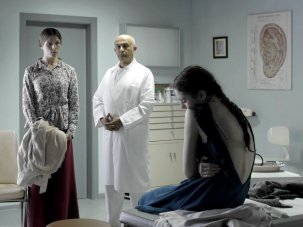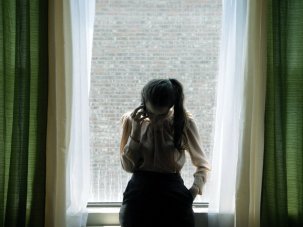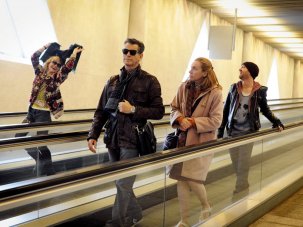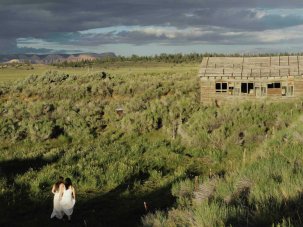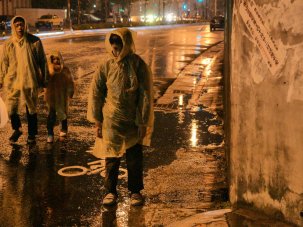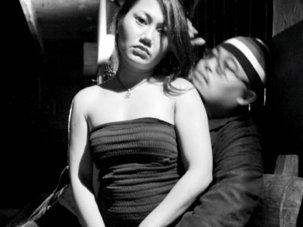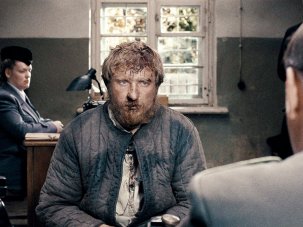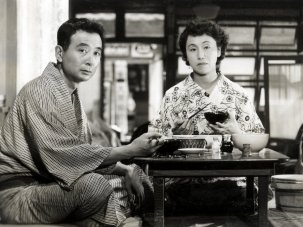Web exclusive
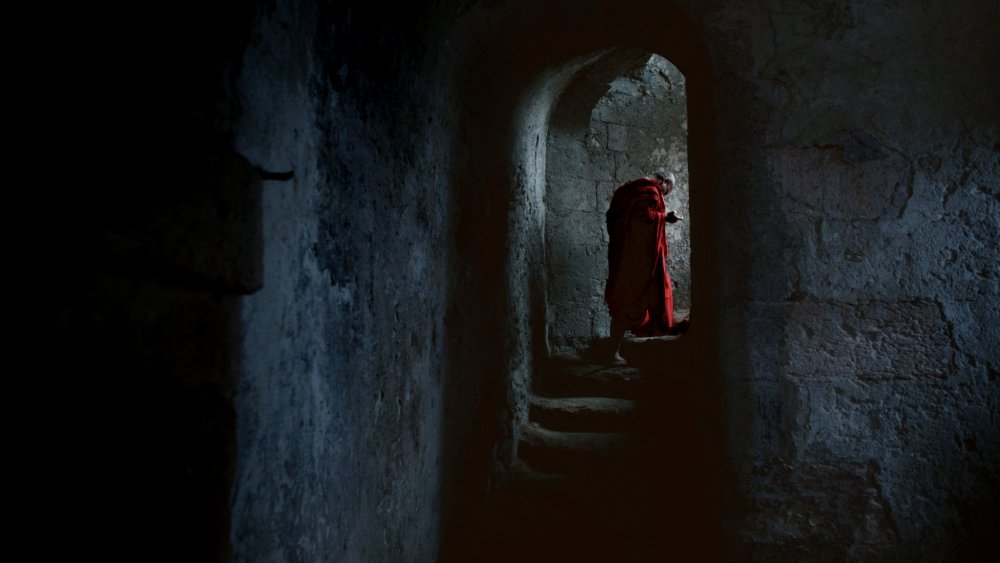
Journey to the West (Xi You)
It’s true that the Berlinale has nothing like the crackle of expectation and excitement that characterises Cannes – but in many ways, that’s a good thing. The fact that films simply seem to exist here in a free-floating state separate from any artificial sense of Event means that they can sometimes – not very often, but certainly in special cases – attain their own event status, which is entirely contingent on the responses they provoke in their own right.
The film I saw this year which most felt like an event – purely because of its own aesthetic and imaginative achievements – was at once one of the biggest feature films in the Berlinale and one of the smallest. OK, I’ll stop the mystification and explain. It was big because it happened to be projected on the mammoth screen of the CineStar IMAX, and it was small because it was an exquisitely minimalist piece of film art that lasted a concise 56 minutes.
The film was Xi You (Journey to the West) and it was the latest by Taiwanese master Tsai Ming-liang, whose Stray Dogs was one of the highlights of 2013 and was also, allegedly, his farewell to feature filmmaking. In a sense, you can see how it would have been hard for Tsai to go further in the direction indicated by that film, just as you couldn’t really imagine Béla Tarr easily following The Turin Horse.
But Xi You was not so much a follow-up to Stray Dogs as a sort of marginal addendum to Tsai’s feature work – and a reprise of an earlier piece, the short Walker, from the group portmanteau Beautiful 2012 (made for the Chinese web video site Youku). Like that film, Xi You is simply about a red-robed Buddhist monk (Tsai’s regular lead Lee Kang-cheng) walking extremely slowly, in a spiritual and muscular Zen exercise.
There are two additions here – that ‘axiom’ of French art cinema Denis Lavant, and the city of Marseilles. Lavant is seen in extreme close-up in the opening shot, his face cast in shadow and as craggy as the landscapes of Mars, becoming a purely sculptural expanse on the vast spread of the IMAX screen. Lavant is seen again in profile in a couple of shots near the start – one of them, with his face in soft focus against a range of sunlit cliffs, suggesting a discreet homage to the sunlight in which Lavant basked in Claire Denis’ Beau Travail.
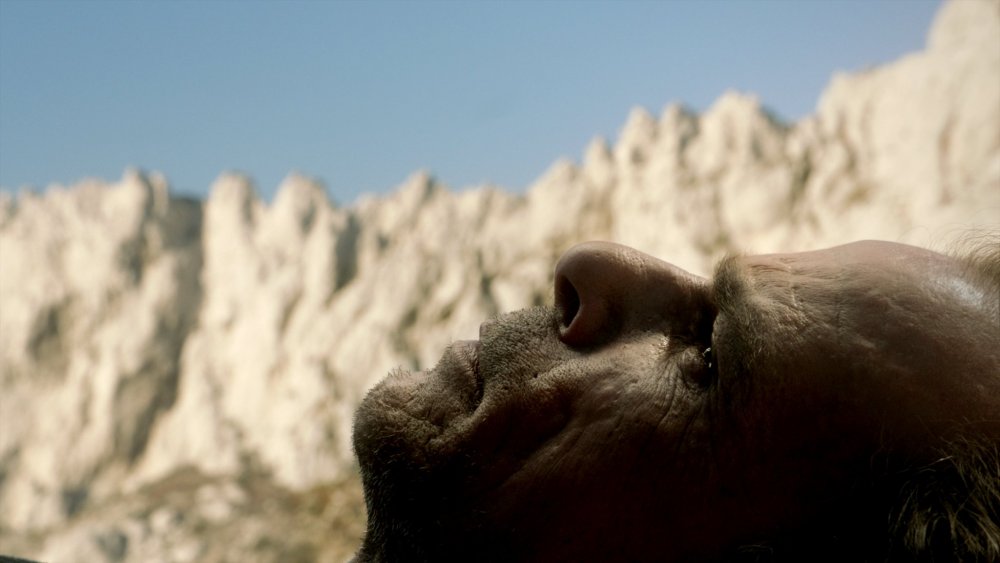
Denis Lavant and mountain
Lavant later reappears, following the slow-pacing monk down a crowded Marseilles street, in almost perfect synch. But for most of the film – comprising only 14 shots, and wordless apart from some overheard conversation among passers-by – Tsai follows the monk on his slow, determined progression through the streets of the town, past windows, through squares, sometimes filling the screen, at other times glimpsed in crowds or even seen as a foggy reflection in a mirror.
The film’s centrepiece shot, at some 20 minutes, is one of the most remarkable I’ve seen in recent cinema, as the monk – a silhouette backlit by a dazzling shaft of sunlight, dust motes dancing – descends a covered staircase while confused pedestrians make their own way up and down the stairs, some stopping to look, others dodging to avoid him. With Antoine Héberlé’s camera slowly, almost imperceptibly shifting to reframe the monk, it’s an extraordinary, magical extended moment – and a decisive refutation of Martin Scorsese’s recent lament that there are no longer any great shots in cinema.
For me personally, Berlin has been a great place for minimalism: one of my absolute Berlinale favourites remains Sharon Lockhart’s event-free but detail-rich 2009 diptych Double Tide. It may seem incongruous to imagine cinema as precise and as intimate as Tsai’s being screened in the monumentalist space of an IMAX cinema, but seeing Xi You on this scale was a revelation.
That’s partly because the film’s sculptural element came magnificently to the fore: one shot shows a crumbling, cracked red-painted wall that fills the screen until the monk’s hand gradually glides into shot. And partly because Tsai magnificently uses every corner of the screen, which you get to scrutinise in depth, craning your head to scan its details: notably in the final shot, in which you find yourself desperately searching for the monk somewhere in a crowd reflected upside down in a mirrored canopy.
The term ‘Slow Cinema’ has suffered its abuses and certainly some overuse, but Xi You represents a refined limit-case of what slow cinema can be – and itself offers a speculation on the uses and meanings of slowness for filmmakers, viewers and performers alike. The monk, the director, the audience all partake in a shared experience of slowness, contemplation, concentration and discipline; for the viewer, Xi You may not be quite as demanding of Zen rigour as for the film’s walkers (or for Lee and Lavant themselves), but Tsai’s latest certainly refocuses your mind, your perceptions and your own inner time in a way that few films do, whatever their tempo.
-
The Digital Edition and Archive quick link
Log in here to your digital edition and archive subscription, take a look at the packages on offer and buy a subscription.





